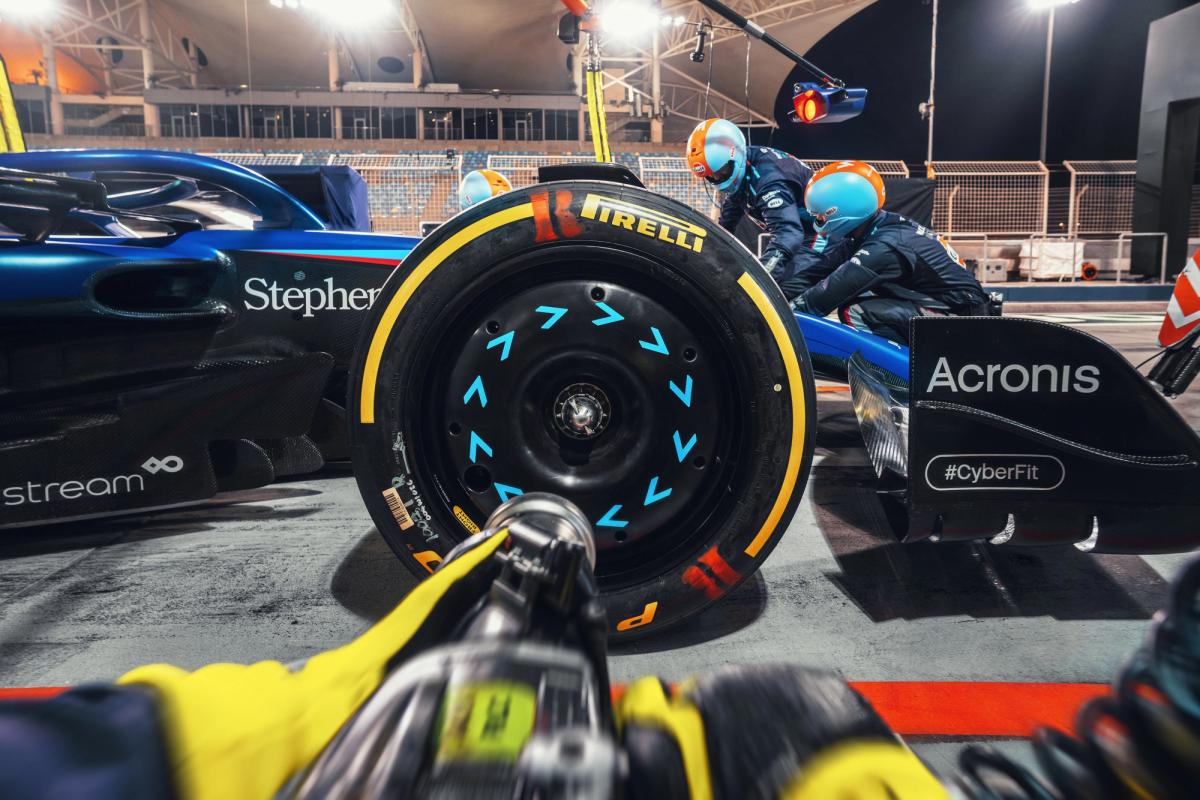For all of the money Formula 1 teams spend developing the highly-advanced technology powering their cars and the aerodynamic wonders exposed to the world, only four simple parts make contact with the race track — the tyres.
You may remember in the 2022 Australian Grand Prix how our very own Alex Albon deftly managed his tyres for an incredible 57 laps to leap 10 places through the order to claim his first points-scoring finish for Williams Racing.
Albono's superb tyre-whispering skills and the FW44's affinity to Pirelli's C2 rubber allowed him to use the same set of hards for all but one lap of Melbourne's Albert Park Circuit before pitting on the penultimate tour.
Alex mastered the tyres on that occasion, but if the tyres aren't working how a driver likes, they won't be able to extract the best possible performance, no matter how well-designed a car they sit in.
In other words, tyres may well be the most crucial component of any F1 car.
Alex embraces the set of hard tyres that lasted 57 laps at the 2022 Australian GP
Tyre Choices
While general-use treaded road tyres were acceptable in F1's earliest days, the modern-day sport has multiple specially constructed rubber specifications from Pirelli called compounds, providing the teams with different grip levels.
Every race has soft, medium, and hard tyre compounds, and each has its benefits and trade-offs. The soft tyre provides the most grip but isn't durable; the hard tyre will last the longest but isn't as grippy; and the medium tyre offers the best of both without excelling at either.
Today's F1 rules state that every driver must use at least two tyre compounds during a race, adding a strategic element to the order of tyre choices and how many pit stops a team might want their drivers to make.
For example, starting on a soft tyre will give drivers extra grip to set faster lap times and attack their rivals early in the race. However, they must revert to a harder tyre compound later, possibly leaving them vulnerable to others on softer rubber.
The rule for using two tyre choices does not come into effect should wet weather play a part in a race. In a wet race, the drivers use tyres with tread, as opposed to the slick dry tyres, and a driver can use a single set of the intermediate or full wet tyres for the race duration.
F1 drivers must use at least two tyre compounds during a Grand Prix
2023 Tyre Compounds
Although Pirelli provides three compounds – the softs, mediums, and hards – to every Grand Prix, there are six tyre compounds available for 2023 that differ between races.
The hardest of these six compounds is the C0, with the second-hardest being the C1, and so on, until reaching the C5, the softest tyre in the current F1 arsenal.
Pirelli announces the three dry tyre compounds available for a race ahead of time. To keep things simple for the audience, the soft, medium, and hard naming scheme remains irrespective of the compounds used.
It's immediately apparent to see the compound any driver is using, as the tyre walls have a coloured band on each side, with red denoting soft tyres, yellow indicating mediums, and the white-walled tyres are the hards. Green (intermediate) and blue (full wet) also appear, but only for rain-affected running.
The soft will always be the softest available compound available at a Grand Prix weekend, no matter if it's the C5, C4, C3, or C2.
It's possible that a C2 might be the soft in one race (with the C0 as the hard, and C1 as the medium) but be the hard tyre the following weekend (with the C4 as the soft, and C3 as the medium).
There's no stipulation that the three tyre compounds must be sequential in Pirelli's six options, and some races have a 'gap' between compounds, for example, with the C2, C3, and C5 as the options, making one tyre much softer – or harder – than others.
Pit Wall Predictions, presented by Gulf
Don't forget to submit your answers before lights out!
Tyre Allocations
Teams and drivers do not have an infinite pool of tyres they can dip into over F1's three-day weekends at a Grand Prix. Instead, Pirelli provides 13 'sets' of tyres for each driver's use throughout the sessions.
In 2023, the allocation of tyres for every competitor is eight sets of soft tyres, three sets of mediums, and two sets of hards. Additionally, each driver gets four sets of intermediate tyres for damp tracks and three sets of full wets for the heaviest rain conditions.
After every Free Practice session, a driver must return two sets of tyres to Pirelli, so by the time Qualifying begins, a driver will have just seven sets of tyres to make it from Q1 until the race's chequered flag.
To give a slight advantage to drivers that don't qualify in the top 10, any runners who don't make Q3 retain all seven tyres for the race, while P1-P10 qualifiers hand Pirelli one final set after qualifying ends.
Teams and drivers must choose their tyres wisely over the course of a race weekend
A brief history of F1 tyres
Although Pirelli is the sole supplier of F1's tyres in 2023, that wasn't always the case, and many manufacturers have had involvement in the sport over the years.
Tyre supplier was a formality in the first 1950 season when the F1 cars just needed rubber wheels similar to a conventional commuter car. Of course, that didn't last too long as the World Championship established itself and competition increased.
Names like Goodyear, Firestone, Dunlop, Continental, and many more provided tyres to F1 teams across the various eras, with developments in tyre technology, such as weight saving and the switch to slicks, all coming in the name of finding any advantage over rival companies.
The rules and regulations changed over time, too, with different diameters and widths, plus grooves and minimum lifespans, all featuring at some point in F1's history.
For example, in an effort to encourage safety by promoting hard tyres, thus lowering cornering speeds, F1 banned tyre changes in 2005, meaning that every driver had to run the 300km race distance on one set of rubber.
However, that rule inadvertently marked a changing era after the controversial 2005 US Grand Prix, where Michelin couldn't ensure the safety of its tyres for the entire race distance, and the company soon pulled out of F1.
By 2011, Pirelli won the contract to be the sole tyre supplier for F1, and the Italian manufacturer has become an everpresent name since, being the single tyre supplier to every F1 team for over a dozen years and counting.
That relationship with F1 could extend to 2025 and beyond, with the FIA opening a tender process to bidders for the future and Pirelli not hesitating to publically announce their interest.
Shop our Australia Collection
Related Tags:
Powered By
© the Williams Group, under licence to Williams IP Holdings LLC
Williams Grand Prix Engineering Limited is a company registered in England and Wales under company number 1297497.
Its registered office is at Grove, Wantage, Oxfordshire, OX12 0DQ
Powered By







